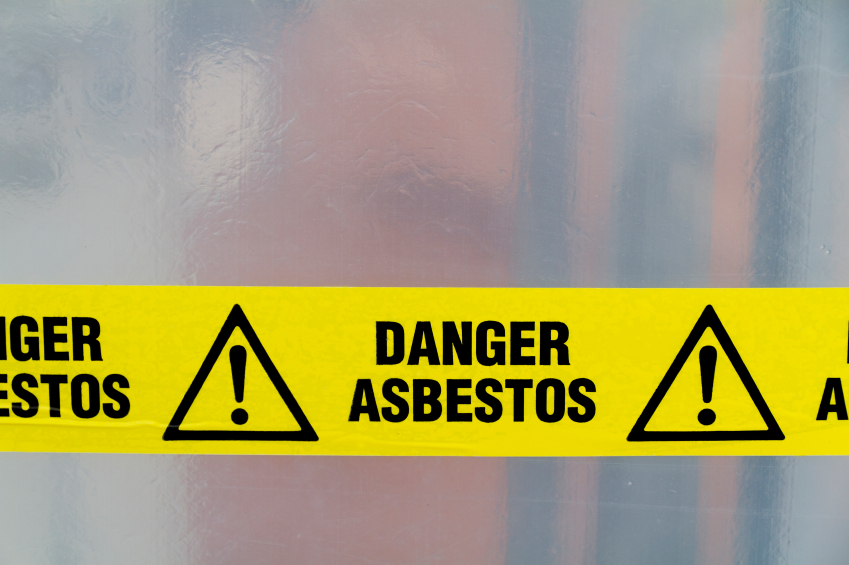
|
In addition to the basic asbestos training requirements for general industry, OSHA has additional training requirements for workers before beginning construction work where ACM is present.
The owner or operator of an asbestos demolition or renovation activity must make sure that a foreman or management-level person or other authorized representative is present when regulated ACM is stripped, removed, or otherwise handled or disturbed at a facility and functions as the “competent person” capable of inspecting the jobsites, materials, and equipment. The training must include, at a minimum applicability, notifications, material identification, and control procedures for removals. Additional training is dependent on the class of asbestos work being completed. The owner or operator must post evidence that the required training has been completed and make it available for inspection at the demolition or renovation site.
Asbestos Work Classes
Class I asbestos work means activities involving the removal of insulation for heating systems (thermal system insulation or TSI) and surfacing ACM and presumed ACM (PACM), which means surfacing material that contains more than 1% asbestos.
Class II asbestos work means activities involving the removal of ACM that is not TSI or surfacing material. This includes, but is not limited to, the removal of asbestos-containing wallboard, floor tile and sheeting, roofing and siding shingles, and construction mastics.
Class III asbestos work means repair and maintenance operations, where “ACM,” including TSI and surfacing ACM and PACM, is likely to be disturbed.
Class IV asbestos work means maintenance and custodial activities during which employees contact but do not disturb ACM or PACM and activities to clean up dust, waste, and debris resulting from Class I, II, and III activities.
Class I and II Asbestos Work
Training for Class I and Class II operations that require the use of critical barriers and/or negative pressure enclosures must be equivalent in curriculum, training method, and length to the U.S. Environmental Protection Agency’s (EPA) asbestos abatement workers’ training required under 40 CFR 763.
Asbestos workers must take a 4-day training course that includes at least 14 hours of hands-on training. The course must cover, at a minimum, the physical characteristics of asbestos, health effects related to exposure, appropriate personal protective equipment (PPE) (including respiratory protection), work practices, personal hygiene, additional safety hazards, medical monitoring, air monitoring, and relevant rules.
Refresher training. Class I and Class II asbestos workers must receive annual refresher training.
Training for other Class II work must include the basic training requirements and additional training on the specific work practices and engineering controls required for Class II workers found at 29 CFR 1926.1101(g). The course must include hands-on training and must take at least 8 hours.
For Class I and II asbestos work, the competent person must be trained in all aspects of asbestos removal and handling. This can be accomplished by taking a 5-day supervisor training course that includes at least 14 hours of hands-on training. Annual refresher training is required.
Class III and IV Asbestos Work
Training for Class III and Class IV employees must be consistent with EPA requirements for training of local education agency maintenance and custodial staff found at 40 CFR 763. The course must include hands-on training and take at least 16 hours for Class III employees and at least 2 hours for Class IV employees.
Refresher training. Employee training must occur at least annually after the initial training has occurred. The regulations do not specify the length of the refresher training.
However, as guidance, a published OSHA letter of interpretation states that for employees performing Class III work, “OSHA expects that the annual refresher training would require a minimum of 2 hours and include a ‘hands-on’ component.” In addition, the letter states that commercial training providers of EPA-accredited asbestos training typically conduct refresher courses for operations and maintenance asbestos work that are 4 hours in course length.
For Class III and IV asbestos work, the competent person must be trained in aspects of asbestos handling appropriate for the nature of the work. Such training and refresher training must be consistent with EPA requirements for training of local education agency maintenance and custodial staff found at 40 CFR 763.
Do you need some fresh ideas for training? Safety.BLR.com® has hundreds of tools and tips that can help you expand your safety program.
